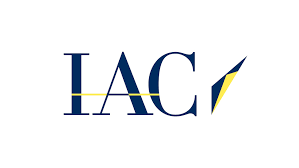

IAC/Interactivecorp (NASDAQ:IAC) Q&A with IAC Business Leaders July 16, 2020 Analyst Call Highlights
Company Participants:
Joey Levin – Chief Executive Officer-IAC
Brandon Ridenour – Chief Executive Officer-ANGI Homeservices
Anjali Sud – Chief Executive Officer-Vimeo
Neil Vogel – Chief Executive Officer-Dotdash
Tim Allen – Chief Executive Officer-Care.com
Glenn H. Schiffman – Chief Financial Officer-IAC

Joey Levin: “…This is the first video interaction that we’ve had with everybody. And I actually, 1.5 minutes into it, really like the format because I can see all your faces. And I think we could hopefully be a little bit more interactive. And I think the goal of today is to be a bit more interactive. It’s really just a long period of Q&A with the leaders directly.
And this is the new and improved IAC. So video is a new experiment for us, obviously, driven by the environment around us. But I think we’re going to do a lot more experiments in new IAC as we’re smaller, as we’re nimbler. You see some other experiments also for us in the last 24 hours, which is that the – we’re not doing guidance anymore, and we’re going to start posting our key metrics monthly. And the thinking behind those things was really to – maybe counterintuitive, was really to focus everybody on the longer term of the business by saying, here’s the metrics, you can see them monthly.
There’s not one big event in quarter. There’s not one big event for the year. It’s just – this is the rhythm of the business. This is the flow of the business. This is what we look at. This is things that we think are important. And we hope that you look at those things and think they’re important but not organize the world around the reporting of one particular event. So that we can all organize for operating the business for the long term and not wasting the time on things like guidance and kind of reducing the importance of any individual particular reporting event. Hopefully, that works. But maybe it won’t, maybe it will increase the volatility, and it will hit people to focus even shorter term. And if we learn that, we’ll adjust but we got to try and see if we can change things.
The other thing that is new is, I’m really excited to be able to introduce all of you to the leaders at IAC’s businesses and to be able to ask them the questions directly. And I think it’s a very – of course, quite biased on this, but I think it’s a very impressive group. Brandon Ridenour, you all know because ANGI has been public for a while. Anjali Sud, some of you have met, she’s done some conferences, but an exceptional young leader at Vimeo and really architect of the current strategy at Vimeo, which, as I mentioned, that really has finally broken through and seeing some really exciting momentum right now. You can see it in the numbers.
Neil Vogel, who’s done at Dotdash, which – what no other digital publisher has done. I mean it’s really – it’s amazing to see right now, kind of relative to competition. But the most impressive part of what Neil and the team at Dotdash have been able to pull off, and you guys should drill them on this, is the focus that they had for the prior several years when everybody else was chasing really shiny objects and things that Neil was convinced didn’t make economic sense, didn’t make business sense, didn’t think could build the business. And he stayed focused on the things that he thought were good for delivering a compelling consumer experience and delivering a productive advertiser experience, an efficient advertiser experience. And that’s finally come through. And I think it’s just really nice to see.
And Tim Allen, who’s very new to the job but not new to IAC. We bought Care at the beginning of this year, and that business is, like everything else with the pandemic, saw some real volatility but is now back to what we think in a very nice place and has – is in some ways given Tim and team the time to lay some really important foundation for building what Care we think can become. We don’t have any metrics on Care yet because it’s too small and too early, but you should talk to Tim about strategy and how he’s thinking about it, what he’s prioritizing.
And then, of course, you get Glenn the whole time, and you all know Glenn well. And of course, he’s an enormous asset to the team at IAC, and he’s done unbelievably well for us since he joined and really helped change a lot of what IAC is doing and continues to do. And so we’re thrilled to – and of course, Glenn continues as a key component of new IAC. That’s the story.”
John Blackledge: Great, thank you and thanks for doing the call. Joey, just given the $4 billion-ish in cash, curious post spin, how you expect to allocate that capital in the coming years for M&A. Should we think about deals within the current business segments or new segments or both? And then just curious, your thoughts on asset values now that we’re 4 to 5 months into this pandemic
Joey Levin: Yes. I knew that one way or the other that would have to be the first question or probably the first several questions, and I was trying to think as I was preparing for this for a clever new answer, but I had to go back to the answer that we always give, which is really – it’s all of the above. We’re definitely going to prioritize the existing businesses. That’s where we have a real advantage. That’s where we say we think we can be the smartest people in the room, and so we can lean into that advantage. But I also think realistically, probably now more than ever, new opportunities, new categories are more likely because I think that their – the cash balance relative to the businesses that we have invites that.
We just moved out, so to speak, of a very big business. And I think that gives us the window, the bandwidth, the capacity to move into new businesses. So I do think that’s probably more likely now than it’s been in a while. And we’ll always look at things kind of in any area and in any stage. And we’d like to have a range of businesses that are more mature, being able to generate profit and businesses that are still early and have enormous growth potential. Well, we’d like enormous growth potential in all of that. But realistically, I think we’ll have a range of life stages in IAC.
I do think that minority investments, we did with Turo, that was a big step for us. Again, I don’t think we’re becoming a collection of minority investments, where I do think minority investments are possible, and that gets a little bit to your second question, which is asset values. There was a window, but it only lasted about 2 weeks, where everything was very cheap. And we initiated a bunch of really exciting discussions then and thought that things could happen. And then I guess, fortunately, I’d say, overall, fortunately, maybe unfortunately for that narrow slice, but fortunately, the Fed stepped in and put in a lot of support. And all the things that we were discussing became totally irrelevant very quickly and not enough time to get anything done.
I think that what – in a lot of instances, businesses that we like, that we like long-term, that we could imagine owning long-term or having a big influence long-term, I think those opportunities may be more available in starting with minority positions, and that’s something that we will consider. But we’re still meaningfully biased towards control positions and things. And I don’t think things generally look cheap right now. I think things generally look pretty expensive right now. But there’s always exceptions to that. And so we are – we’ve always been focused on new opportunities. We’ve always been focused on how to deploy the capital and the cash, but probably now more than ever, it’s very – it’s front and center relative to everything else.
Brian Fitzgerald: Thanks guys. Joey, I had a question around – Barry recently was interviewed by Bloomberg, and he said, more or less, he expects the world to return to normal after the pandemic passes in terms of office work and travel maybe. Is a similar viewpoint guiding your planning, your execution, maybe how you plan to deploy capital? Do you expect a shift towards video interaction and e-commerce to revert back to the mean? Or is this a new normal we’re dealing with?
Joey Levin: Yes, I think there’s a couple of things in what Barry said, I don’t want to over-interpret what Barry said, you probably have to bury the – if there’s a deeper meaning. But I think what he was saying is, eventually, the world will go back to normal. Of course, I agree with that. And the question is, is normal identical to what it was or is normal different but still normal, comfortable, we’re not isolated and things like that.
Take – video is a great example. I think this is the first time that we all have interacted on video. I can’t imagine why, notwithstanding a vaccine or something where we could be physically close to each other, I can’t imagine why we wouldn’t do this over video in the future. I think this is a great way for us to interact. I can be closer to your face than I would be in person. We can have an audience, which is easy and helpful for more shareholders to be able to participate. As I think this is a fantastic format.
When we think about Vimeo specifically, which is where we have a lot of exposure in this area. We’ve got – my favorite recent example of a customer is a 60-year-old diner, I think, in Oklahoma or a similar part of the country. That said, we’re – this wasn’t a customer we called, it was a self-enrolled customer, and they started creating videos to explain what their COVID program was, meaning when they were open, or how takeout worked, or things like that.
Right now, that customer is communicating with their audience by video about COVID. But when the diner comes back open and everybody is fully in the store, they’re still going to want to communicate with those customers by video because they’re going to want to say when they have a Memorial Day barbecue. They’re going to want to say when they have a happy hour special or whatever it is, and now they know that they can communicate with their audience with video and that their audience interacts in that way. I think that, that is very sticky and a meaningful change in consumer behavior.
So I do think, and I’m sure Barry as well thinks, that changes in consumer behavior created by this or accelerated by this are permanent and sticky, but also, there is a time that the world will go back to normal with the benefit of, that diner now has the ability to communicate that they always had plus the ability to communicate with video, and they’ll use that. And I expect that to be the case across a lot of areas.
I mean I think that the main thrust of what Barry was saying is will people go back to offices? And will there be a culture around office, physical location, Monday through Friday, nine to five? I do think – I do also think that is likely. I think there will be changes, adjustments, but I haven’t yet heard a great alternative, and we’ve been brainstorming, and thinking and talking to experts and everybody on this.
I haven’t heard a great alternative that allows companies to build careers, build leaders, build culture, build camaraderie entirely remotely. But who knows, it may happen. I mean there’s all kinds of innovation happening. So it’s possible. But our bias is that people will congregate in person in offices, again, in a meaningful way.

Anjali Sud, CEO Vimeo: “Hi, everybody. Good to see some faces that I recognize as well as some new ones. I’ll share a quick update on the business and then jump into your questions. I think, as Joey mentioned, and as you can see in our monthly disclosure, it’s been a busy few months at Vimeo. We’ve long believed that our TAM is massive, that eventually, every business in the world will want to use video to communicate with customers and with their employees.
And so our question was never if that demand would come, but when. And I think over the last few months, the trends have been pretty clear, that the pandemic has accelerated the demand for video. We’re seeing step function increases in adoption of our software. It’s happening across use cases and user segments and price points and geos. And it’s everything from that diner that Joey mentioned in Montana and restaurants and local shops all around the world who are using video now to stay connected on social media with their customers. It’s everything from fitness studios and churches, live streaming classes and sermons. And of course, Fortune 500 companies all now needing to host their town halls, their conferences and their events virtually.
So the question that we all have is, of course, what will that demand look like in the future? We don’t expect everything will just continue exactly as is. But I will say we’re not seeing any signs yet of that demand subsiding. And we’re very focused on capturing it with a great product and great experience.
And so while we can’t sort of predict where things will ultimately settle, we all have a lot of belief that right now, many more businesses are being exposed to the power of video for the first time and we don’t expect that they’ll stop using it, that they’ll stop seeing it as a critical tool long after the pandemic is over. So it’s an exciting time for the business. We’re very focused on this massive market opportunity we have ahead. And welcome any questions.”
Ross Sandler “I think I can speak for everybody, taken a few fitness classes over Vimeo. I could definitely take a few more. But two questions. First, on pricing. How much pricing power do you have within each tier? And can you talk about the graduation rate as subscribers move from one tier to the next, how prevalent is that? And then the second question is on distribution. YouTube and Facebook have pretty substantial distribution advantages. But you guys have better tools. So can you just talk about how you compete on distribution with some of those larger platforms? Thank you.”
Anjali Sud “ So on the pricing power question, look, I think, our view — and we’ve continued this quarter to move ARPU up nicely, and we’re seeing our ARPU increase in both our self-serve and our enterprise business. And our view is that as we unlock more capabilities and utility and in the enterprise side, as more people across the organization and team start to use video, there is opportunities to increase our pricing. But for us, it comes more from, to your point, graduating people and having them access more features or use video more frequently as against just sort of increasing price.
So we’re really focused on moving people up tiers. And then within the enterprise, sort of landing and expanding. So starting maybe with the town hall, live streaming the town hall, and then moving to be powering video for the marketing team or for HR onboarding and training. So that motion is really where we’re seeing a lot of opportunity. And I think we’re seeing it right now in our numbers. We also have a big opportunity to continue to invest in the products to unlock more use cases.
One thing you’ll see, live streaming is a good example where the willingness to pay tends to be higher for live streaming because it’s real time. You need it to be flawless. You need the quality to be great. And you’re often broadcasting to large numbers of people. So it’s one of our higher tier plans. And so over the pandemic as demand for live streaming has increased, that has had a real impact on our ARPU. And so that’s really the approach we’re taking.
As it relates to distribution, we really don’t see ourselves any longer as competing with a Facebook or a YouTube. We really see ourselves as helping you put your videos onto those platforms, as well as anywhere else on the web. And today, one of the big parts of our value proposition is that once you have a video, we’ll help you make videos, we’ll help you live stream content. You can also simultaneously distribute that content natively onto Facebook and YouTube and LinkedIn and Twitter and your website.
And that actually is a major value proposition for us. And it’s really the difference between being a destination, which is what YouTube and Facebook are, and a walled garden, where they’re trying to keep content on their platform, and our sort of soft SaaS B2B approach, which is how do we help you get your videos everywhere.
And so I don’t see Facebook and YouTube and any — really any distribution platform as a competitor. I think they’re a partner, and we’re very focused on actually integrating with them in a variety of ways. And you’ll see us do more partnerships and integrations with exactly those players over the year.”
